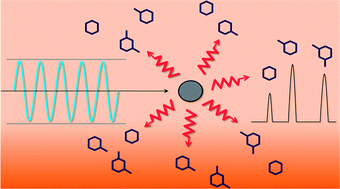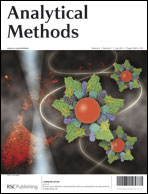A microwave-assisted alternate thermal desorption technique has been optimized and discussed concerning the compatibility with the occupational exposure assessment of organic pollution both by activated charcoal active and passive sampling. This technique applied to aromatic compounds (benzene, toluene and m-xylene) has shown a good efficiency by pumped sampling directly made on the ceramic desorption tubes. The optimal desorption recovery has been obtained with 50 mg of activated charcoal previously thermally treated, and when sampling was performed at low flow rates (<100 cm3). But, the low quantity of activated charcoal in the ceramic sampling/desorption tubes, and consequently the limited trapping capacity, could be an issue especially in highly polluted areas. The passive sampling technique, whose diffusive sampling flow rates are usually smaller than regular active sampling ones, seemed to be a better alternative in that case. A preliminary evaluation of the diffusion sampling rates Ui by the direct use of the ceramic desorption tubes as passive samplers has been undertaken using a controlled gas test facility (Ubenzene = 0.13 cm3 min−1, Utoluene = 0.11 cm3 min−1, Uxylene = 0.11 cm3 min−1). The microwave thermal desorption technique, coupled to passive sampling, could be an appropriate and efficient analytical method for the assessment of workplace organic pollutions.

You have access to this article
 Please wait while we load your content...
Something went wrong. Try again?
Please wait while we load your content...
Something went wrong. Try again?


 Please wait while we load your content...
Please wait while we load your content...